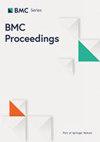"Becoming an independent feeder": infant's transition in solid food introduction through baby-led weaning.
Q2 Biochemistry, Genetics and Molecular Biology
引用次数: 0
Abstract
Background: Baby-led weaning (BLW), a method for introducing complementary foods, has become popular because it is considered beneficial for infants.
Methods: This study investigated the experiences of mothers when using BLW in Jakarta, Indonesia using a qualitative descriptive approach. Thirteen mothers participated who had introduced complementary feeding using BLW for a minimum of 6 months. Semi-structured interviews and thematic analysis was used to work with the data.
Results: Three themes were identified: avoiding being a 'picky' eater; infants gagging and choking; and becoming independent feeders.
Conclusion: Further research related to the growth and development of baby-led weaning infants in Indonesia is recommended.
"成为独立的喂养者":婴儿通过婴儿指导断奶过渡到固体食物。
背景:婴儿指导断奶(BLW)是一种引入辅食的方法,因其被认为对婴儿有益而广受欢迎:本研究采用定性描述的方法,调查了印度尼西亚雅加达的母亲在使用婴儿指导断奶法时的经验。13位母亲参加了此次研究,她们使用BLW添加辅食至少6个月。研究采用半结构式访谈和主题分析法处理数据:结果:确定了三个主题:避免 "挑食";婴儿塞牙和窒息;成为独立的喂养者:建议进一步研究印度尼西亚婴儿断奶期婴儿的成长和发展。
本文章由计算机程序翻译,如有差异,请以英文原文为准。
求助全文
约1分钟内获得全文
求助全文
来源期刊

BMC Proceedings
Biochemistry, Genetics and Molecular Biology-Biochemistry, Genetics and Molecular Biology (all)
CiteScore
3.50
自引率
0.00%
发文量
6
审稿时长
10 weeks
 求助内容:
求助内容: 应助结果提醒方式:
应助结果提醒方式:


